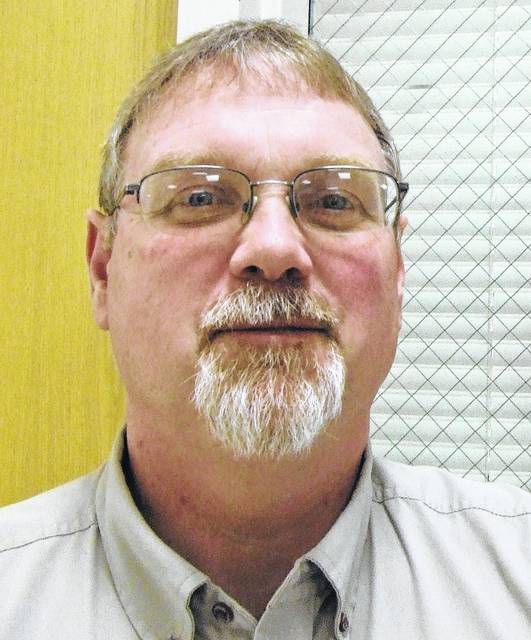
Harvest moved along slowly this week as rain kept many grain producers from making much progress.
As I drive around Clinton County, I would guess we are 50 percent or so complete with soybean harvest and many yield reports are better than anticipated.
Corn is not near as far along. Early yield reports are good but maybe not like we have seen the past couple of years. Many producers are seeing slower than usual drydown in their corn fields this October. This may be in part due to how the weather conditions impacted corn growth and development this year.
Later planting this year may also be contributing.
One hypothesis from Ohio State University agronomist Alexander Lindsey is that, in 2020, rainfall in June-September was substantially less than normal. As a result, the corn crop may have experienced a sort of “delayed development” this year.
Temperatures were below the long-term average, which may have contributed to the crop not exhibiting strong stress symptomology as one might expect when moisture levels are low. Rather, the crop may have been able to extend its growth phase to utilize the precipitation that did occur in August and September this year.
Lindsey addresses in depth the extended drydown phenomenon this year in the latest issue of the Ohio State University C.O.R.N newsletter. If you would like to read the whole article go to: https://agcrops.osu.edu.
Looking at the future forecast, the days of 70 degrees may be over for us after this weekend. In general, accumulation of 20 to 29 GDDs is required for grain moisture to lower 1%.
However, as the weather turns cooler and potentially cloudier, the grain moisture content reductions will likely be lower, ranging from 0.0-0.5% per day.
If harvest delays due to wet weather continue, I want to encourage farmers to contact their local Farm Service Agency (FSA) office to apply for the Coronavirus Food Assistance Program 2.0 (CFAP 2.0). The application deadline is Dec. 11, 2020.
President Trump and USDA Secretary of Agriculture Sonny Perdue announced an expansion of the original CFAP intended to provide support to farmers who suffered losses because of the COVID-19 pandemic. The following information is sourced from USDA and is available at https://www.farmers.gov/cfap.
Eligibility
Any individual or legal entity who shares in the risk of producing a commodity may apply for CFAP 2. Producers must be in the business of farming and producing commercially produced commodities at the time of submitting their application to be eligible.
Commodities grown under a contract in which the grower has ownership and production risk are eligible for CFAP 2.
To be eligible for payments, a person or legal entity must have an average adjusted gross income of less than $900,000 for tax years 2016, 2017, and 2018. However, if 75 percent of their adjusted gross income (AGI) comes from farming, the AGI limit of $900,000 does not apply and the person or legal entity is eligible to receive CFAP 2 payments up to the applicable payment limitation.
Persons and legal entities also must comply with the provisions of the “Highly Erodible Land and Wetland Conservation” regulations, often called the conservation compliance provisions; and not have a controlled substance violation.
Eligible commodities
Commodities eligible for CFAP 2.0 include: row crops, wool, livestock, specialty livestock, dairy, specialty crops, floriculture and nursery, aquaculture, broilers and eggs, and tobacco.
Ineligible Commodities
Commodities not eligible for CFAP 2 include:
• Hay, except alfalfa, and crops intended for grazing which are ineligible for CFAP 2.
All equine, breeding stock, companion or comfort animals, pets, and animals raised for hunting or game purposes.
• Birdsfoot and trefoil, clover, cover crop, fallow, forage soybeans, forage sorghum, gardens (commercial and home), grass, kochia (prostrata), lespedeza, milkweed, mixed forage, pelts (excluding mink), perennial peanuts, pollinators, sunn hemp, vetch, and seed of ineligible crops.
How to apply
To complete the CFAP 2 application, producers will need to reference their sales, inventory, and other records. However, since CFAP 2 is a self-certification program, this documentation will not need to be submitted with the application.
Because applications are subject to County Committee review and spot check, some producers will be required to provide documentation. Producers should retain the records and documentation they use to complete the application.
Applications can be completed online, manually, or through your local FSA office.
Additional information about the application, including a calculator, is available here https://www.farmers.gov/cfap .
Tony Nye is the state coordinator for the Ohio State University Extension Small Farm Program and has been an OSU Extension Educator for agriculture and natural resources for over 30 years, currently serving Clinton County and the Miami Valley EERA.


